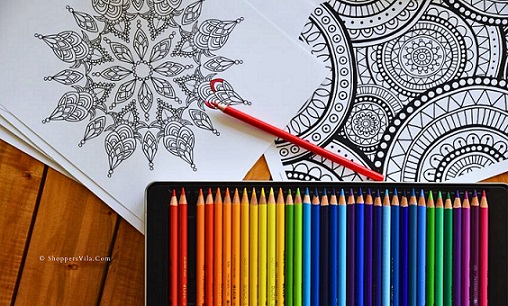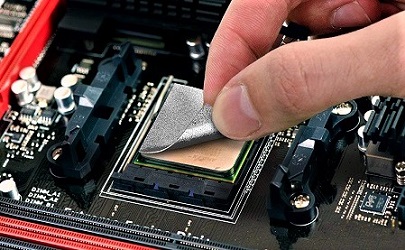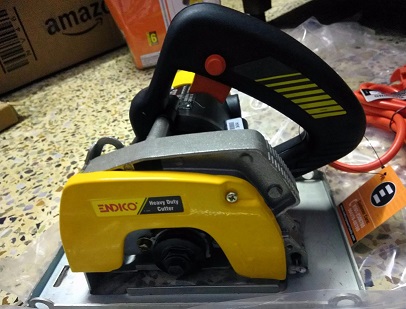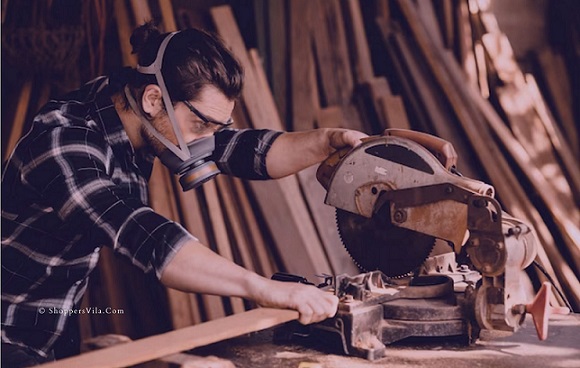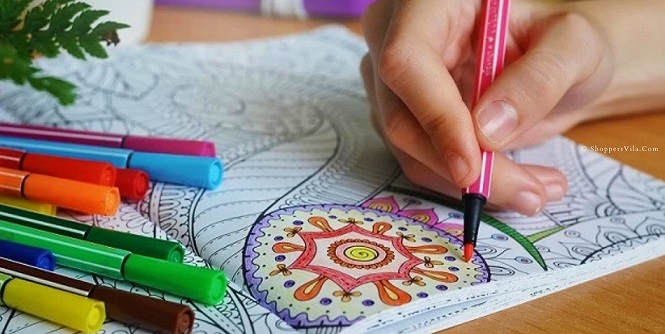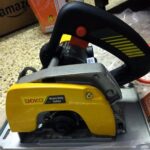Are you interested in creating beautiful mandala designs but don’t know where to start? then this comprehensive guide to Master the Art of Mandala with mandala art equipment Kit and Drawing Tools will help you. In this article, we will explore the different types of tools and materials you need to create stunning mandala art, including kits for beginners and advanced artists.
Mandala art is a form of meditation that has been practiced for centuries. It is a spiritual and artistic practice that involves creating intricate patterns within a circular shape. To create these beautiful designs, you need to have the right tools and materials. In this article, we will explore the different types of mandala art equipment available and help you choose the best tools and materials for your mandala art practice.
Understanding Mandala Art
Before we dive into the different types of mandala art equipment, let’s first understand what mandala art is. Mandala is a Sanskrit word that means “circle.” It is a spiritual and ritual symbol used in Hinduism and Buddhism to represent the universe. In modern times, mandala art has become a popular form of meditation and artistic expression.
Mandala art involves creating intricate designs within a circular shape. These designs can be simple or complex, and can include geometric patterns, symbols, and shapes. Creating mandala art is a calming and meditative practice that can help reduce stress and anxiety.
Basic Materials / Tools Required for Mandala Art Equipment
To create mandala art, you need a few basic materials, including:
- Paper: You can use any type of paper for mandala art, but thicker paper is recommended as it can withstand heavy pressure from the tools.
- Pencil: A pencil is essential for creating the initial sketch of the mandala design.
- Eraser: An eraser is useful for correcting mistakes in the initial sketch.
- Ruler: A ruler is useful for creating precise lines in the mandala design.
- Compass: A compass is used to create circles and other shapes within the mandala design.
- Protractor: A protractor is useful for creating precise angles within the mandala design.
- Paints and Brushes: If you plan on painting your mandala design, you will need paints and brushes. Consider using acrylic paints and a variety of brush sizes for different effects.
- Dotting Tools: Dotting tools are used to create the signature dots in mandala designs. Consider using a set of dotting tools with various sizes to create different effects.
- Stencils: Stencils can be used to create intricate designs within the mandala. Consider using reusable stencils made from durable material.
- Light Pad: A light pad is useful for tracing designs onto paper. Consider using a LED light pad with adjustable brightness for maximum comfort.
1. Paper
Choosing the right paper is crucial for creating a beautiful and long-lasting mandala design. Here are some tips on how to choose the right type of paper for mandala art:
- Choose thicker paper: Using a thicker paper for mandala art is recommended as it can withstand heavy pressure from the tools, and will not rip or tear easily. Look for paper that has a weight of at least 80lb or higher.
- Consider the texture: The texture of the paper can also affect the final outcome of your mandala design. Smooth paper is better for intricate designs with fine details, while textured paper can add depth and dimension to your design.
- Experiment with different types of paper: Don’t be afraid to try different types of paper until you find the one that suits your style and preferences.
2. Pencil
Creating the initial sketch of your mandala design is a crucial step in the process. Here are some tips on how to use a pencil for creating the initial sketch of the mandala design:
- Choose a soft lead pencil: A soft lead pencil, such as a 2B or 4B, is recommended as it will allow you to create a light sketch that can easily be erased later.
- Use light strokes: When creating the initial sketch of the mandala design, use light strokes to create a rough outline of the design.
- Use a sharp pencil: Make sure your pencil is sharpened well so that you can create fine details and intricate lines.
- Enhance your mandala design with these Top 10 Best Color Pens for Mandala Art.
3. Eraser
Correcting mistakes in the initial sketch is an important step in creating a flawless mandala design. Here are some tips on how to use an eraser for correcting mistakes in the initial sketch:
- Use a kneaded eraser: A kneaded eraser is a good option for correcting mistakes in the initial sketch as it can be shaped to fit the contours of your design.
- Use a white eraser: If you need to erase a lot of pencil marks, use a white eraser as it will not leave any residue or smudges on your paper.
- Be gentle: When using an eraser, be gentle and avoid rubbing too hard on the paper, as this can damage the surface.
4. Ruler
Creating precise lines is essential for creating a beautiful and symmetrical mandala design. Here are some tips on how to use a ruler for creating precise lines in the mandala design:
- Choose a straight edge ruler: A straight edge ruler is recommended as it will help you create perfectly straight lines in your design.
- Use a non-slip ruler: Make sure your ruler has a non-slip surface to prevent it from sliding around on your paper while you’re drawing.
- Be patient: Creating precise lines can take time, so be patient and take your time to ensure that your lines are straight and accurate.
5. Compass
The compass is an essential tool for creating circles and other geometric shapes within the mandala design. Here are some tips on how to use a compass for creating circles and other shapes within the mandala design:
- Use a compass with a locking mechanism: A compass with a locking mechanism will help ensure that the radius of the circle stays the same throughout the drawing process.
- Experiment with different circle sizes: Don’t be afraid to experiment with different circle sizes to create interesting and unique designs.
- Use a soft lead pencil: Use a soft lead pencil to draw the circles and other shapes within your design, as this will make it easier to erase any mistakes.
6. Protractor
Protractor is an important tool for creating precise angles within the mandala design. Here are some of the points to consider when using a protractor:
- Understanding Angles: To use a protractor effectively, you must have a good understanding of angles. Angles are formed when two lines meet at a point. The degree of the angle is determined by the amount of turn from one line to the other. For example, a right angle is 90 degrees.
- Choosing the Right Protractor: There are different types of protractors available in the market. Choose a protractor that is easy to read, sturdy and durable.
- Placing the Protractor: Once you have selected the protractor, place it on the paper in such a way that the base line of the protractor is aligned with the line that you want to measure the angle from.
- Reading the Angle: To read the angle, align the protractor’s base line with one line of the angle, and then read the number on the protractor that the other line intersects. Make sure you read the angle from the correct scale of the protractor.
- Using the Protractor in Mandala Art: Protractor is very useful in creating intricate mandala designs. It can be used to create precise angles in each petal or shape of the mandala.
By using a protractor, you can make your mandala design more symmetrical and precise.
7. Paints and Brushes
If you are planning on painting your mandala design, you will need to consider the types of paints and brushes to use. Here are some tips to help you choose the right materials:
- Acrylic Paints: Choose acrylic paints for painting mandalas as they offer easy color mixing, quick drying, and the ability to layer without waiting for each layer to dry. Opt for high-quality acrylic paints to achieve the best results.
- Brush Sizes: When painting mandalas, you will need different brush sizes to create various effects and lines within the design. Some brushes can hold more paint or ink, enabling you to create bolder lines and shapes within the mandala design. It is recommended to purchase a set of brushes in various sizes to have them on hand for all your mandala painting needs.
- Brush Shapes: You can use different brush shapes, including round, flat, and angled brushes for Mandala painting. Round brushes are great for creating fine lines, while flat brushes are useful for filling in large areas of the mandala design. Angled brushes can be used for creating straight lines and sharp edges.
- Brush Material: The material of the brush also matters when it comes to mandala painting. Choose brushes made of high-quality synthetic fibers for your mandala painting needs, as they are generally more affordable than natural brushes, which are made of animal hair and are typically more expensive.
8. Dotting Tools for Mandala Design
Dotting tools are essential tools for creating the signature dots in mandala designs. They come in a range of sizes and shapes, making it possible to create different dot sizes and effects. Here are some tips and techniques for using dotting tools in your mandala designs:
- Understanding Dotting Tools: Dotting tools are essentially pointed tools that are used to make dots of various sizes. They can be made of different materials such as wood, metal, plastic, or silicone. Some dotting tools come in a set with various sizes and shapes, while others can be bought individually.
- Choosing the Right Dotting Tools: When it comes to dotting tools, the size and shape matter. The size of the dotting tool will determine the size of the dot created, while the shape will influence the overall effect. Consider using a set of dotting tools with various sizes and shapes to create different effects in your mandala design.
- Using Dotting Tools for Different Effects: Dotting tools can be used to create a variety of effects in your mandala design. For instance, you can use them to create small or large dots, or to create gradient effects by using different sizes of dotting tools. You can also use them to create textured effects by varying the pressure applied while making the dots.
- Practice Makes Perfect: As with any new skill, using dotting tools takes practice. It’s important to experiment with different sizes, shapes, and techniques to find what works best for you. You can start by practicing on a piece of paper before moving on to your final design.
9. Stencils
Stencils are a popular tool for creating intricate and repeatable designs in mandala art. They can be especially helpful for beginners who may not have the skills or experience to create complex designs by hand.
- Types of Stencils for Mandalas: There are many different types of stencils that can be used for mandala art, including circular stencils, geometric stencils, and nature-inspired stencils. Stencils can be made from a variety of materials, including plastic, metal, and paper.
- Choosing the Right Stencil: When choosing a stencil for mandala art, consider the size and complexity of the design you want to create. Look for stencils that are made from durable materials, and that are easy to clean and reuse.
- Using Stencils in Mandala Art: To use a stencil in mandala art, place it on your paper or canvas and trace around the design using a pen, pencil, or other drawing tool. You can then fill in the design using paint, markers, or other coloring materials.
- Tips for Using Stencils in Mandalas: Experiment with different colors and materials to create unique and interesting designs using stencils. Combine stencils with other mandala art tools, such as dotting tools or brushes, to create more complex and layered designs.
10. Light Pad (Optional)
A light pad is a useful tool for any mandala artist, especially for those who prefer tracing designs. Here’s why a light pad is a must-have for your mandala art kit:
- Tracing Designs: A light pad is perfect for tracing designs onto paper. You can easily see the lines and details of the design through the paper, making it easier to trace accurately. It saves you time and effort, especially if you are creating a complex design.
- Adjustable Brightness: A LED light pad with adjustable brightness is ideal for maximum comfort. You can adjust the brightness according to your preference and the environment you are working in. This feature is especially helpful if you have sensitive eyes or are working in a dimly lit room.
- Convenient Size: Light pads come in different sizes, and you can choose one that fits your needs. A portable light pad is easy to carry around and is ideal for artists who travel or work in different locations. A larger light pad is more suitable for artists who work on larger pieces.
- Multipurpose Use: A light pad is not only limited to tracing designs. You can also use it for other purposes such as calligraphy, sketching, and even as a makeshift light source for photography.
Types of Mandala Art Tools
In addition to the basic materials, there are a variety of tools that can be used to create more intricate and detailed mandala designs. Some of the most common types of mandala art tools include:
Mandala Art Kits for Beginners
If you’re new to mandala art, a mandala art kit for beginners is a great place to start. These kits typically include all the basic materials you need to create a mandala design, including paper, pencils, erasers, rulers, and compasses. Some kits may also include stencils or pre-designed templates to help guide you through the process of creating your mandala design.
Mandala Art Kits for Adults
For more advanced artists, there are mandala art kits for adults that include a wider variety of tools and materials. These kits may include specialized mandala drawing tools, such as compasses with adjustable angles or dotting tools for creating intricate dot patterns within the mandala design. Some kits may also include a wider variety of paper options, including different colors and textures of paper, as well as a wider variety of pens and paints.
Dot Mandala Painting Tools
Dot mandala painting is a popular technique for creating mandala designs. This technique involves using small dots of paint to create intricate patterns within the mandala design. To create dot mandala designs, you will need dotting tools of different sizes. These tools can be made of metal, plastic, or wood, and come in a variety of shapes, including round, flat, and pointed.
Mandala Stencils
Mandala stencils are pre-designed templates that can be used to guide the creation of your mandala design. Stencils are particularly useful for beginners who may not have the skills or confidence to create a mandala design from scratch. Stencils come in a variety of shapes and sizes, and can be made from a variety of materials, including plastic, paper, or metal.
Mandala Drawing Tools
Mandala drawing tools are specialized tools that are designed to make the process of creating a mandala design easier and more precise. These tools can include adjustable compasses, protractors, and rulers with angled edges. Some mandala drawing tools also include interchangeable heads, which allow you to create different shapes and patterns within the mandala design.
Mandala Art Brushes
Mandala art brushes are specialized brushes that are designed for creating precise lines and shapes within a mandala design. They come in a variety of shapes and sizes and can be made of natural or synthetic fibers. Some mandala art brushes allow for holding more paint or ink, enabling you to create bolder lines and shapes within the mandala design.
Mandala Art Paints
Mandala art paints come in a variety of types and colors. Some popular types of paints for mandala art include acrylic paints, watercolors, and gouache paints. When choosing paints for your mandala art practice, it’s important to choose paints that are high quality and have a strong pigment, as this will ensure that your mandala design looks vibrant and colorful.
How to Choose the Right Mandala Art Equipment
Now that we have discussed the types of mandala art equipment you need, let’s talk about how to choose the right equipment for you.
1. Consider Your Skill Level
The first thing to consider when choosing mandala art equipment is your skill level. If you are just starting out, it may be best to begin with a basic mandala art kit for beginners. These kits typically include all the essential tools and materials you need to get started. If you are more experienced, you may want to invest in a more comprehensive kit or individual tools and materials to expand your practice.
2. Choose High-Quality Materials
Investing in high-quality materials can make a big difference in the quality of your mandala art. Look for materials that are durable, long-lasting, and designed specifically for mandala art. Thicker paper or canvas is recommended as it can withstand heavy pressure from the tools. Quality paint, markers, or pencils can help you achieve more vibrant and detailed designs.
3. Consider Your Budget
While it’s important to invest in quality materials, it’s also important to consider your budget. Mandala art equipment can range from affordable to quite expensive. Determine how much you are willing to spend and look for options within your budget. Keep in mind that investing in high-quality materials may save you money in the long run by reducing the need to replace worn-out or low-quality equipment.
4. Research Brands and Reviews
When choosing mandala art equipment, it’s important to do your research. Look for reputable brands that specialize in mandala art equipment. Read reviews from other artists to get an idea of the quality and durability of different products.
5. Try Before You Buy
If possible, try out different equipment before you make a purchase. Visit an art supply store or attend a workshop to test out different materials and tools. This can help you determine what works best for your style and preferences.
6. Consider Your Workspace
When choosing mandala art equipment, it’s important to consider your workspace. Make sure you have enough space for your materials and tools, and that you have adequate lighting and ventilation. Consider investing in a sturdy desk or easel to work on, as well as storage solutions to keep your materials organized.
7. Choose Tools that Suit Your Style
Finally, choose tools that suit your personal style and preferences. You can create Mandala art with a wide range of tools, including pens, pencils, paintbrushes, dotting tools, stencils, and more. Experiment with different tools to find what works best for you and your artistic vision.
Advanced Mandala Art Tools and Materials
More advanced artists can use a variety of specialized mandala art tools and materials to create more intricate and detailed designs. These tools include:
- Metal rulers with precision edges for creating straight lines and angles
- Fine-tip pens for creating detailed patterns and designs
- Embossing tools for adding texture to the mandala design
- High-quality paints with strong pigments for creating vibrant colors
- Specialized paper with different textures and colors for creating unique and intricate mandala designs
Frequently Asked Questions (FAQs)
1. What are the most important factors to consider when choosing mandala art equipment?
Some of the most important factors to consider when choosing mandala art equipment are the material, size, and type of equipment, as well as your skill level and preferences.
2. What type of mandala art tool is best for beginners?
For beginners, it’s often best to start with simpler equipment, such as a compass and ruler, before moving on to more complex equipment such as protractors and specialized mandala drawing tools.
3. Do I need to be an experienced artist to do mandala art?
Not at all! Mandala art is suitable for beginners and experienced artists alike. The key is to have patience and enjoy the process.
4. Can I use any type of paper for mandala art?
While you can use any type of paper, thicker paper is recommended as it can withstand heavy pressure from the tools.
5. What are some common materials used in mandala art?
Some common materials include acrylic paints, brushes, stencils, metallic markers, and embellishments.
6. How do I clean my mandala art tools?
To clean your tools, simply wipe them with a damp cloth and dry them thoroughly after use. Avoid using harsh chemicals or abrasives that can damage the tools.
7. What is a mandala art kit for beginners?
A mandala art kit for beginners typically includes all the essential tools and materials needed to get started with mandala art, such as paper, pens, pencils, and basic stencils.
Conclusion
Choosing the right mandala art equipment is essential for creating stunning and intricate mandala designs. To ensure you make the right choice, it’s essential to consider factors such as the material, size, and type of equipment. Additionally, it’s important to keep in mind your skill level and preferences to make the most of your equipment.
By following the tips outlined in this article, you’ll be able to make an informed decision when choosing your mandala art equipment. With the right equipment, you’ll be able to create beautiful and intricate designs that will leave a lasting impression.
